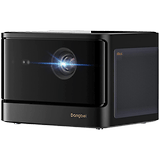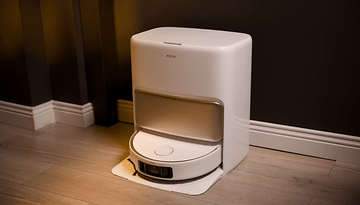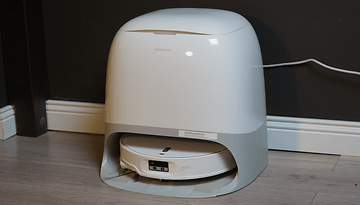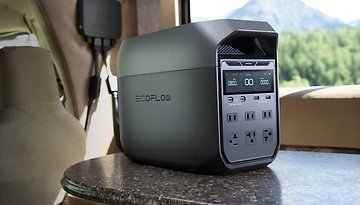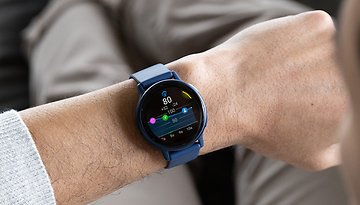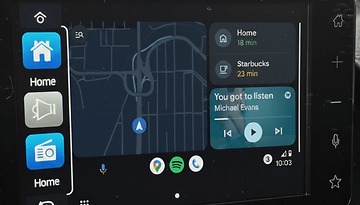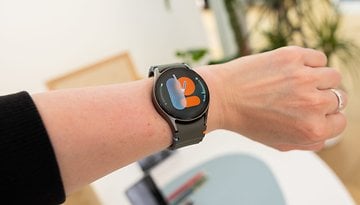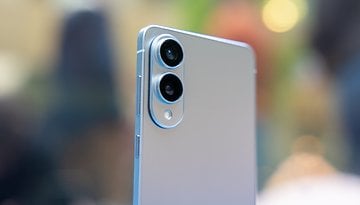Dangbei Mars Review: The Portable Projector That Won't Disappoint


Searching for a smart projector for your home theater? You don't have to forego the benefits of DLP technology. Dangbei's Mars is a luminous Full-HD projector equipped with longevity and a host of smart features. Read on to discover any potential disadvantages we uncovered in our nextpit test.
Good
- Bright and sharp picture
- Solid connectivity
- Integrated speakers
- Whisper quiet in operation
Bad
- App selection in Linux operating system too small
- Feet not height-adjustable
- Sound image too tinny
- No jack output

Dangbei Mars release date and price
The Dangbei Mars convinces with a bright and sharp picture in the nextpit test. The smooth operating system, the many setting options and the quiet fans are also very positive.
However, Dangbei cannot quite decide whether the Mars should be portable or permanently installed in the home theater. This leads to problems with the flexibility as well as the sound. The app selection is another point of criticism that you should know before buying.
Still interested? You can find the Dangbei Mars for $1,000. An important note: The model we tested is the Full HD version of Mars. A 4K upgrade, which includes a jack, is available for $1,800.
Design & Processing
For a DLP projector, the Dangbei Mars is a real trum. With dimensions of 24.5 x 21 x 17.3 cm and a weight of 4.5 kg, the model is more of a permanent fixture for home cinema than a perfect travel companion. The build quality is high despite the plastic casing. Dangbei also misses out once again on integrating adjustable feet into one of their beamers. This is not exactly unproblematic due to the heavy weight.
Pros:
- Modern design blends in well with the smart home.
- Solid connectivity.
- The remote control is convincing, just like its little brother.
Cons:
- Rather large and heavy.
- No adjustable feet.
- Hardly any operating options on the projector itself.
While the little brother of the Dangbei Mars, the Dangbei Neo, which we also tested, is also suitable for taking along with a compact case, the Mars wants to secure a permanent place in your home theater. While the expansive dimensions don't really bother in everyday use, the high weight is a bigger problem. This is because the Mars is not equipped with adjustable feet.
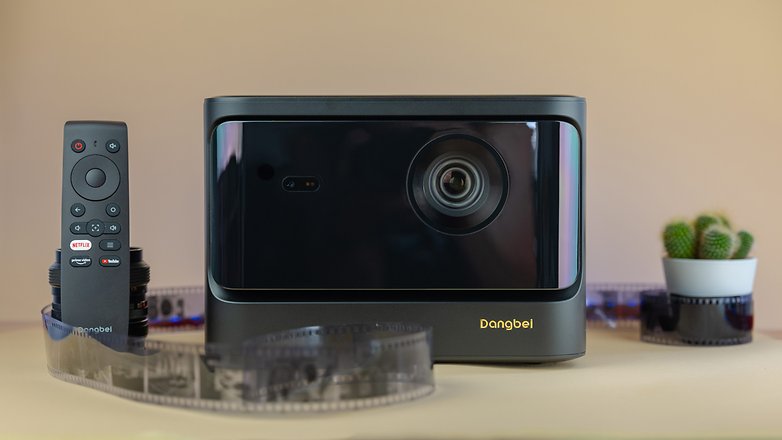
For: how do we set up beamers in the home theater? Modern DLP beamers with laser technology are robust enough to put them back on the shelf after a short cooling down period. This robustness and longevity is no comparison to old beamers.
However, we then have to align the Mars either on a tripod or on shelves or tables. The latter is only possible by placing books underneath. With a weight of 4.5 kg, the projector is almost too heavy for light tripods. For my test, I used a Rollei CT-5C, which is designed for up to 8 kg.
The build quality of the Dangbei Mars is very solid, although I would rather not risk a fall from the tripod or tipping it over. Dangbei includes a compact and very logical remote control as well as a cleaning cloth, which you should actually use due to the piano finish. The beamer collects fingerprints and dust, which you have to remove regularly.
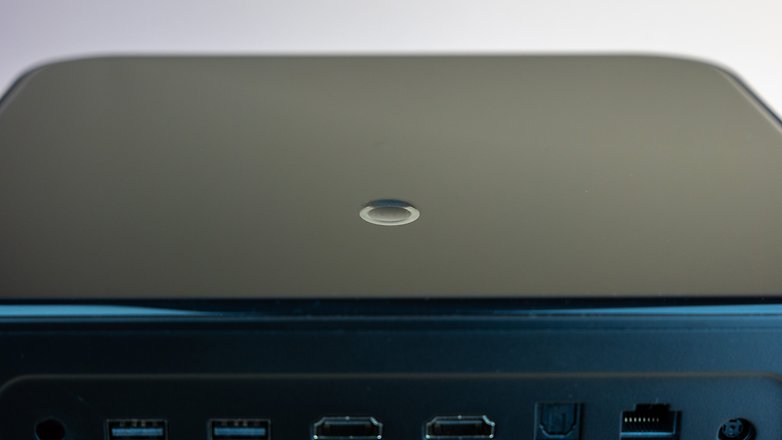
Speaking of fingerprints: Dangbei only installs one touch-capacitive button on the top that turns the beamer on and off. The operation is a bit fiddly and doesn't really help you use the device. You cannot switch to a source or content in the operating system on the device itself. I would have liked at least a button to change the source.
With this button, which unfortunately does not exist, you could have enjoyed the solid connectivity of the beamer even more. This is quite extensive with two HDMI ports, one of them with ARC (Audio Return Channel), two USB-A ports, Ethernet and S/PDIF. The fact that there is a potential power port for each HDMI port is also really convenient for fans of streaming sticks.
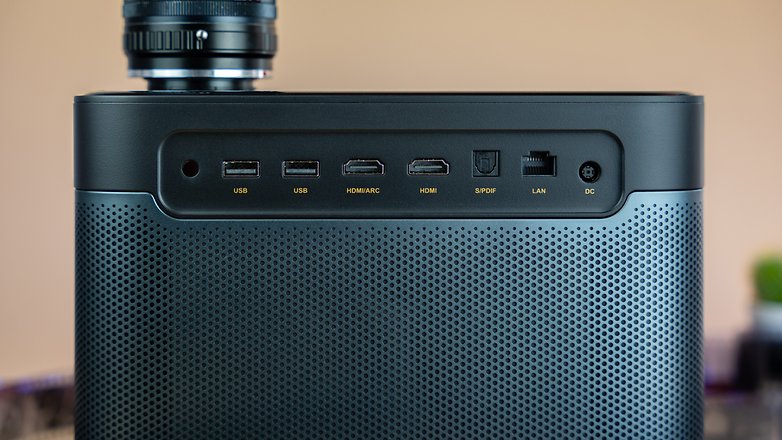
Image quality and auto-lock
The Dangbei Mars resolves content in Full HD at maximum and offers a maximum brightness of 2,100 ANSI lumens. For this, the manufacturer combines DLP projection technology with a laser light unit. In addition, there is an HDR-10 certification, an automatic brightness control and a clever auto-lock technology via a ToF sensor including a camera.
Pros:
- Excellent brightness, even during the day.
- Long service life of 30,000 hours.
- Good auto-lock.
Cons:
- 4K resolution remains reserved for Pro model.
- No optical zoom.
Okay, let's clear up the gobbledygook from the introduction. DLP projection technology is used in many modern (mini) beamers and usually ensures a more compact design. In the case of the Dangbei Mars, however, this advantage is omitted. What remains is a good color reproduction, which is even sufficient for an HDR certification, as well as a long lifespan. In combination with the laser light unit, Dangbei states 30,000 hours.
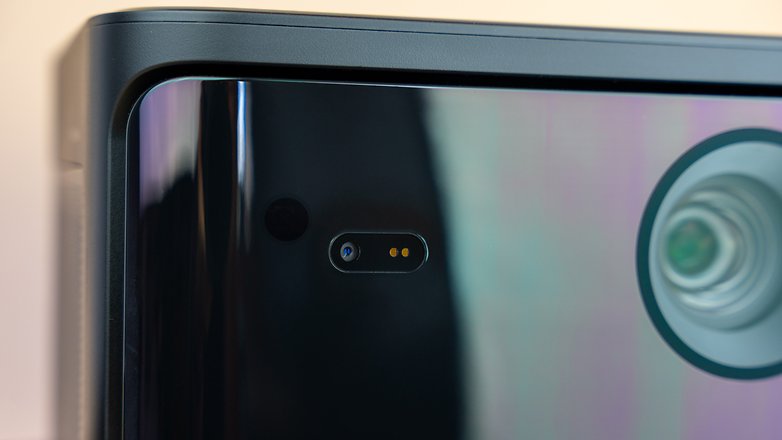
The high brightness, which Dangbei specifies at 2,100 ANSI lumens, is indeed impressive. The beamer sets this automatically, but it can also be adjusted manually in the picture settings. During the test period, I used the projector on a screen on a bright sunny day and also turned on the light. The content was perfectly visible and the contrast was also excellent at maximum brightness. Here you buy a beamer that can definitely be used during the day.
At the same time, the Mars stands out for its inconspicuousness in operation. Even when muted, the projector's fans are barely audible. Here, the projector benefits from the large case, which allows the manufacturer to install larger fans that rotate more slowly.
But the DLP technology also has disadvantages. You have to do without an optical zoom, which is rarely found in projectors of this type. Instead, there is a digital zoom, which can only reduce the displayed image, which is of course at the expense of the resolution.
Accordingly, it is recommended to adjust the image size via the distance to the wall. Here, the autofocus allows between 60" and 180", which is the equivalent of 1.52 m and a decent 4.5 m.
Keyword autofocus: Fortunately, Dangbei installs a ToF sensor, a camera as well as other sensors for the auto-locking of the projector image in the Mars. Some patterns and boxes appear on your wall, and the projector can use these to recognize the required settings for focus and keystone correction. This is really convenient and works better than, say, the Samsung Freestyle I once tested.

Relevant at this point: The "Mars" model still has a bigger brother, the Mars Pro. Only the Pro model supports 4K resolutions; you have to settle for Full HD for the basic model. The small model is hard to find via a Google search because the Pro model is always displayed.
Besides the higher resolution, the Pro model also offers a 3.5 mm jack. The brightness also looks higher in the spec sheet at first glance, but Dangbei uses different units in its comparison table - ANSI lumens and ISO lumens. Presumably, the light unit used is one and the same, only a different image sensor is installed.
Smart functions & performance
Dangbei equips its Mars with its own operating system based on Linux. Regarding the installed hardware, the manufacturer only provides the information that 1 GB DDR4 RAM with 8 GB internal memory is installed. Thus, the Beamer is on par with the smaller Neo model - only the Pro variant offers more performance.
Pros:
- Smooth performance of the operating system.
- Many setting options for picture and sound.
- Netflix and YouTube are preinstalled.
Cons:
- Many apps are missing from the Dangbei store.
- Not AirPlay compatible.
The manufacturer Dangbei relies on Linux for the operating system, but you won't notice much of that during use. Instead, you navigate through a tidy and smooth system interface, where you can already find apps like Netflix or YouTube ex-works. As with the Dangbei Neo, you will notice that many popular apps for the German and European market are missing when you browse the in-house app store.
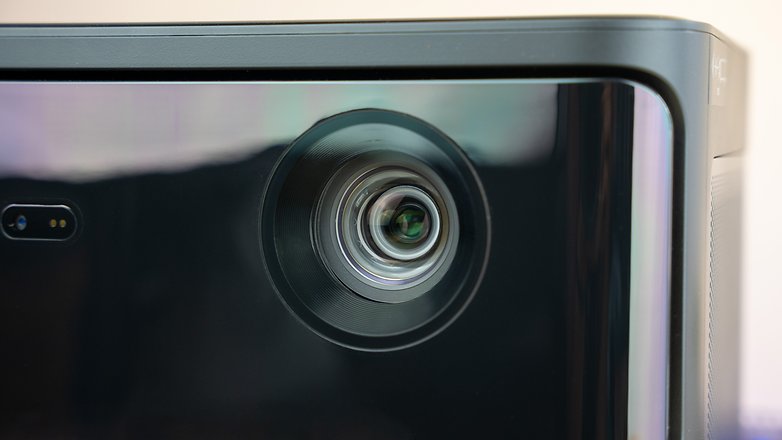
So, if you want to use the Mars specifically as a smart projector, you might want to think about purchasing an additional Amazon Fire TV stick or a Google TV. You will have to use the two HDMI ports to access DAZN, Amazon Prime or the content of public broadcasters.
Smart projectors with AndroidTV or the Samsung Freestyle (review) are better positioned here. If you want to see all apps that can be installed on the Neo, I recommend Netrange's homepage.
Besides the solid connectivity, the Dangbei Mars compensates for this flaw with many settings in its operating system. You can adjust both the picture and the sound to your liking. However, it's not quite that simple, since there are some translation errors in the installed operating system. It took me at least a little while to understand "treble" as a translation of the English "treble".
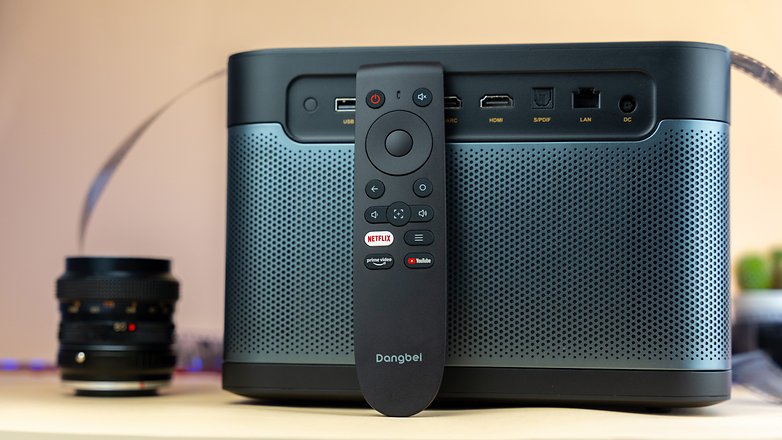
While you can send content from your Android smartphone to the projector via an app called "Streamcast", this is less easy with an iPhone. Apple's AirPlay standard is missing, and the recommended iOS app for streaming cannot be found in the App Store.
Loudspeaker
Thanks to the large casing, there is room for two 10 W speakers in the Dangbei Neo. Alternatively, you can connect Bluetooth speakers to the device via Bluetooth 5.2. Or you can use S/PDIF as optical audio output. Curiously, Dangbei omits the 3.5 mm jack on the basic model. This convenience is reserved for buyers of the Pro model. Too bad!
Pros:
- Integrated speakers.
- Optical audio output for connecting to a home theater sound system.
Cons:
- Sound could be better for the size.
- No jack connection.
Compared to the smaller Dangbei Neo, the manufacturer offers two speakers with 10 W instead of 6 W each. And in terms of volume, the smart beamer actually cuts a good figure. I can well imagine that it is possible to fill larger rooms with sound without external speakers, and dialogs are also understandable at a greater distance.
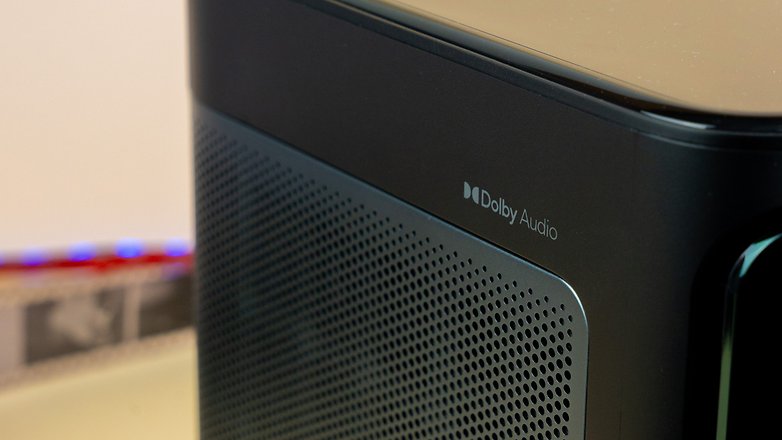
However, regardless of the volume, the built-in speakers sound tinny. This can be compensated a bit via the various audio settings, but for my taste there is never a cinema feeling. The integrated speakers should therefore be seen as a stopgap and external speakers should be connected via Bluetooth or S/PDIF. And here we see a disadvantage of the basic model.
The Pro version also has a 3.5 mm jack. This is much more common, especially in 2023, and would make it possible to connect a Bluetooth speaker to Mars without any delay. The latency of Bluetooth can quickly interfere with movies, and a device that is compatible with optical S/PDIF is probably more likely to be used by home theater enthusiasts.
Final verdict
Let's draw a conclusion: The Dangbei Mars is an exciting projector for home cinema, but it is a bit of an identity crisis. After all, it would make a pretty good portable projector thanks to the smart operating system, DLP technology, auto-lock and integrated speakers. However, the feet on the bottom cannot be adjusted—and with a weight of 4.5 kg, the big projector is really unwieldy.
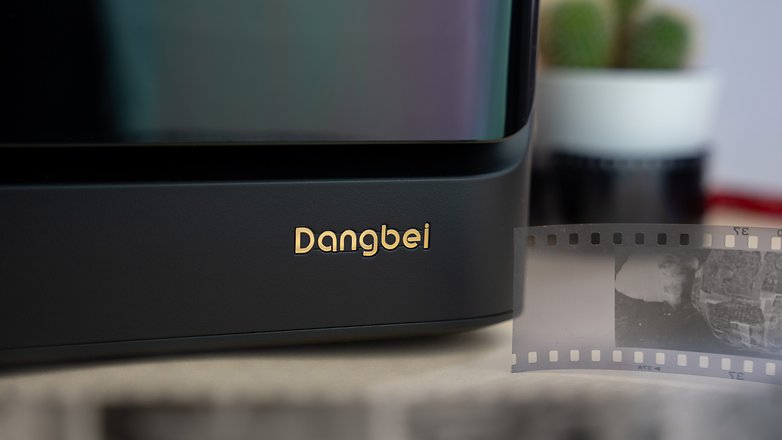
So, a fixed installation in your home theater is the obvious choice, but the Mars doesn't really want to fit in here either. Above all, the missing optical zoom, which would help a lot when placing it in the living room, is annoying. But also the missing jack and the not quite optimal resolution with Full HD are disadvantages that you don't have to put up with in other models.
For a price of $1,000, there are definitely alternatives that shine with a better resolution or higher brightness values. Most of them do not come with a smart operating system, but this is a point of criticism for Dangbei anyway due to the limited app selection. Thus, the strong character beamer is not an unqualified recommendation.
